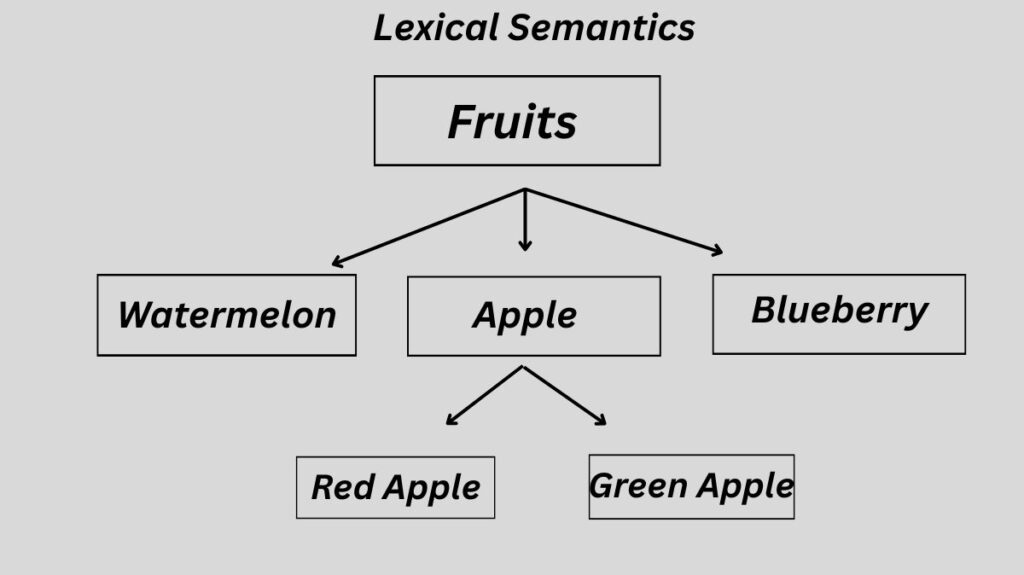Definition of Lexical Semantics

A key component of semantic analysis that focusses on the meaning of individual words and fixed word combinations is lexical semantics in natural language processing.
This is a thorough explanation:
Core Focus: Word meanings and fixed word combinations are the focus of lexical semantics. The study of phrasal or compositional semantics, in contrast, focusses on how the meanings of individual words come together to create the meaning of phrases and sentences.
Units of Meaning: The idea of a word sense is essential to lexical semantics. There might be more than one meaning or sense associated with a single word form or lemma (the base or citation form of a word, for as “mouse” for “mice”). Polysemy is the name given to this phenomena. For instance, the lemma “mouse” may be used to describe either a computer or a little rodent.
Lexical Meaning
Word meaning has historically been recorded in lexicons and dictionaries, which provide a list of lemmas and the information that goes with them. These resources use lemmas to bundle information, such as invariant semantic features. However, the meaning qualities required for NLP systems may not be fully covered by standard dictionaries, which are frequently created for humans.
WordNet is an important resource for English lexical semantics. WordNet is a database of lexical connections arranged according to synsets, which are collections of synonyms. WordNet makes an effort to record conceptual semantic information about words.
lexical semantics Types
WordNet and other sites record meaning relations between word senses, which are an important aspect of lexical semantics. These traditional sense connections include, for instance:
- Synonymy: Similar meanings (for example, “Orange” and “Apfelsine” in German, or terms that belong to the same synset, such as “star,” “ace,” and “adept”).
- Hyponymy/Hypernymy: The IS-A connection (for example, “animal” is a hypernym of “cat,” while “cat” is a hyponym of “animal”). Taxonomies can be formed from these.
- Meronymy: The link between portion and total (for example, “tire” is a meronym for “car”).
- Antonymy: Contrasting meanings (for example, “big” and “small”).
Another crucial resource for comprehending word meaning is distributional information. Using the settings in which words are used and the comparable behaviours of other words, this method learns about the meaning of words.
Important Task
Word Sense Disambiguation (WSD): Ambiguity is a significant problem in semantic analysis, especially at the lexical level. Words that have several meanings are said to be lexically ambiguous. The process of identifying which particular sense of an ambiguous word is being used in a given situation is known as word sense disambiguation. WSD is frequently seen as a classification issue in which contextual features are used to determine the semantic tag or sense number that the system assigns. Lexical context, part-of-speech tags, bag-of-words context, local collocations, and syntactic relations are examples of characteristics that are pertinent to WSD.
Related Concepts: Other semantic notions, such as Semantic Similarity, which gauges how closely words or sentences convey meaning, are connected to lexical semantics. Understanding Selectional Preferences, which are limitations predicates (like verbs) impose on the semantic characteristics of their arguments, is another aspect of it.
The NLP Pipeline: Semantic analysis, including lexical semantics, usually comes after syntactic analysis (parsing), but lexical analysis is usually an early stage in natural language processing (NLP), concentrating on tokenisation and morphology. Word meanings may be ascertained with the help of the syntactic structure, which offers context. POS tagging and other information from lower levels can be used in semantic analysis.
To put it briefly, lexical semantics is essentially about comprehending language’s meaning units at the word level, overcoming polysemy, and representing and figuring out the intended meaning of individual words in context using tools and strategies like WordNet, WSD, and distributional methods.
